Titus Canyon Grand Loop by Mountain Bike | Death Valley National Park, California
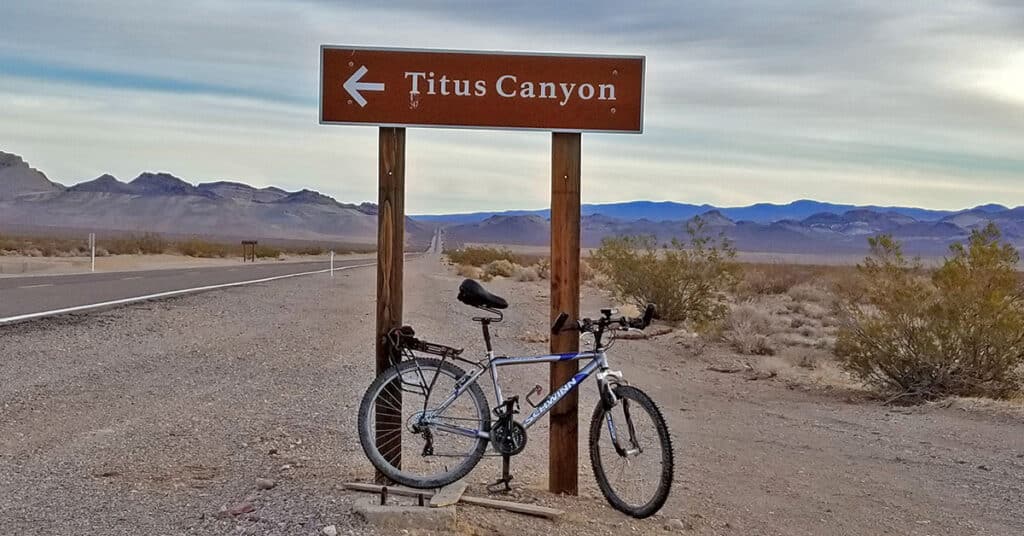
The Titus Canyon Grand Loop by Mountain Bike is a huge 65.6-mile loop beginning and ending in Death Valley, California at a rest area just North of the intersection of Highway 394 (Daylight Pass Road) and Scotty’s Castle Road. There is no 2-car assist here. No car parked on each end of Titus Canyon. No one-way trip down Titus Canyon. Instead, the entire loop both up and down is made by mountain bike. Route details: Approx. 66 Miles; 7,000ft Elevation Gain; **1/2 Asphalt Rd, 1/2 Unpaved Rd** Click image or title above for more…
Return of Lake Manly | Lake in Death Valley | Death Valley National Park, California
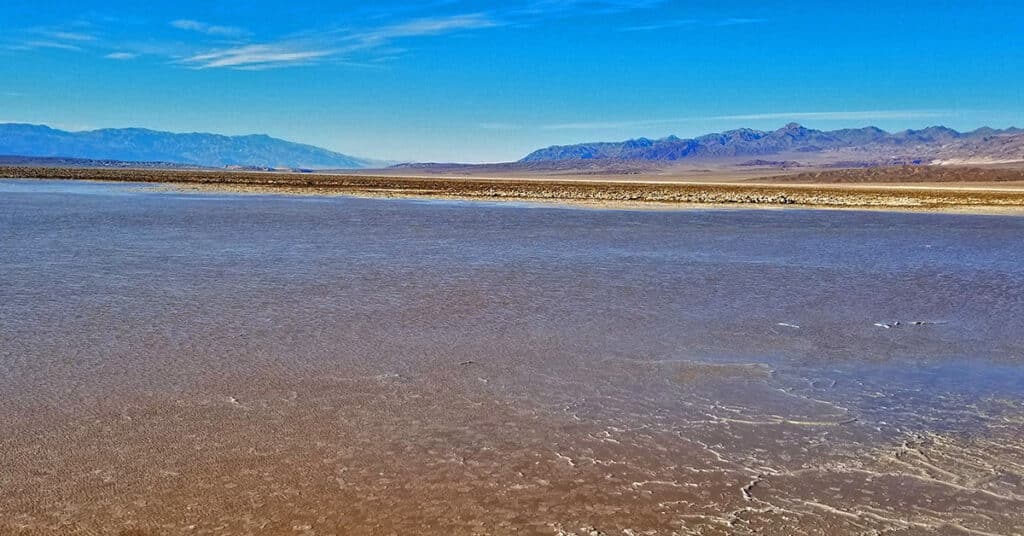
Over time, Death Valley floor gradually became one of the lowest, hottest and driest places on earth. Lake Manly slowly evaporated leaving the salt flats at the base of Death Valley. Occasionally, a memory of Lake Manly returns to the floor of Death Valley in times when enough moisture manages to make it over the surrounding mountains. During this wet enough Winter, I had to stop and explore, making it nearly to the middle of the valley, to the shore of the very temporary Lake Manly. Route details: 2-4-mile RT; **Salt Flat, Streams and a Temporary Lake.
Natural Bridge Canyon | Death Valley National Park, California
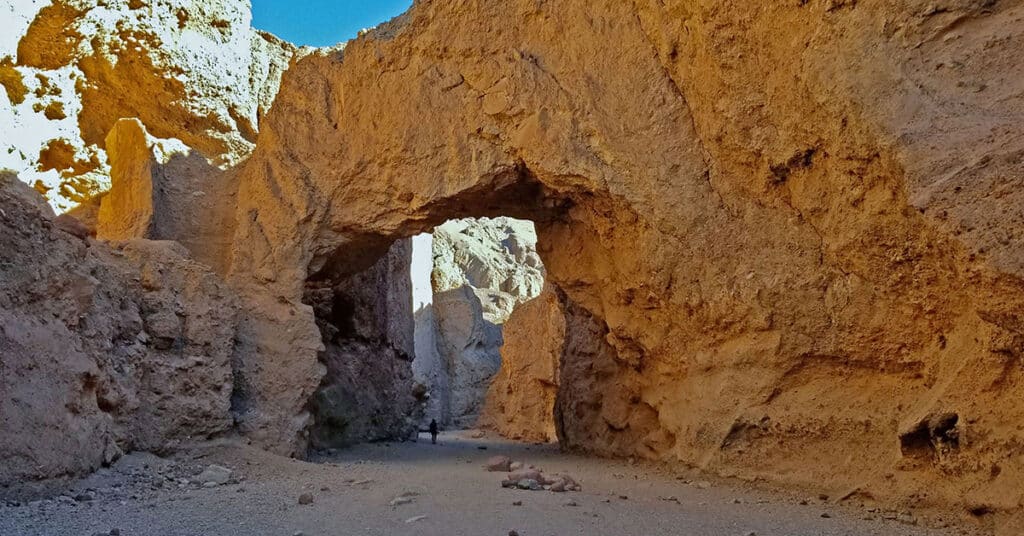
Natural Bridge Canyon in Death Valley National Park, California, contains one of the most massive and spectacular natural bridges I have seen. The entire area was once a huge alluvial fan of composite rock washed down from the Black Mountains above. Over time the fan hardened, and subsequent floods cut through the fan creating a fairly narrow canyon with high sheer vertical wall borders towering up from 40 to 100ft or more on either side. About a mile up the canyon from the parking area at the canyon’s entrance there is a massive natural bridge formed when water tunneled through the composite rock. Route details: Approx. 4 Miles RT
500ft Elevation Gain **Canyon Wash Route** Click image or title above for more…
Keane Wonder Mine | Death Valley National Park, California

Keane Wonder Mine offers both historical artifacts from the early 1900’s mining boom in the Death Valley Region and a great hike with a spectacular view of Death Valley. See old mine shafts and a aerial tram that transported gold ore down a steep stretch of the Funeral Mountains. A historic timeline is included. Approx. 4 Miles RT; 1,500ft Elevation Gain **Good Trail Almost All the Way** Click image or title above for more…
Death Valley In a Day | Death Valley National Park, California

Death Valley in a day is a one day whirlwind tour of many of the most popular sites in Death Valley National Park, California. It’s a great place to start if you are planning a brief first-time visit and overview of Death Valley. Locations visited in order: Dante’s View at sunrise, Zabriskie Point, Ubehebe Crater, Titus Canyon, Mesquite Sand Dunes, Devil’s Cornfield, Salt Creek, Harmony Borax Works, Furnace Visitor Center, Furnace Creek Ranch, Death Valley Museum, Devil’s Golf Course, Badwater Basin, Artist’s Drive, Golden Canyon, The Inn and Oasis at Death Valley. Sunrise to sunset in Death Valley.
Dante’s View to Mt Perry | Death Valley National Park, California
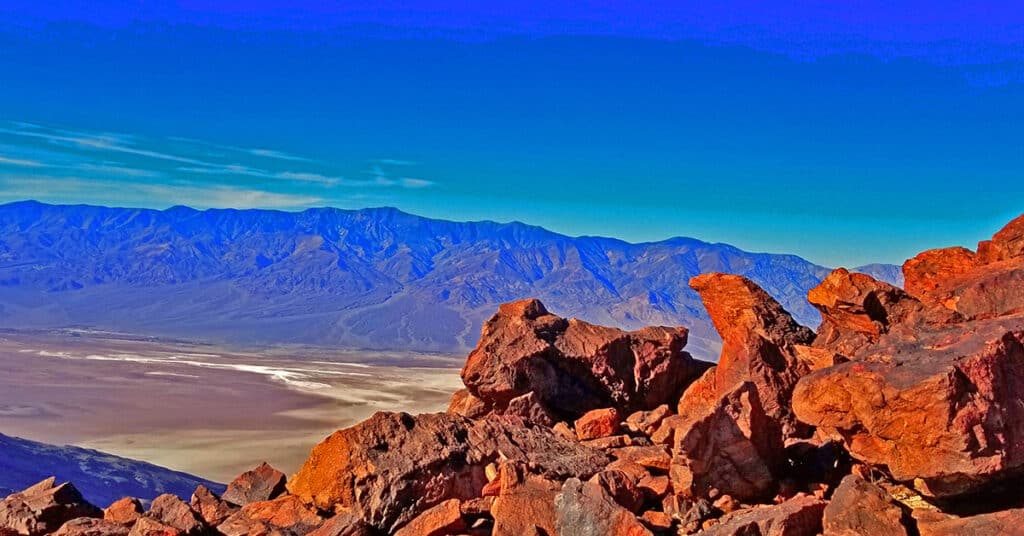
The elevation of Dante’s View is 5,475ft and the elevation of Mt. Perry is 5,716ft, but that alone is not the entire story. The scenery from Dante’s View all the way to Mt. Perry is uniquely spectacular. From Dante’s View’s 5,475ft perspective one can look almost straight down into Badwater Basin, at -282ft below sea level, the lowest point in the Western Hemisphere. But that is not all. From Dante’s view one can look directly across the width of the vast expanse of Death Valley 20.6 miles away to the 11,049ft Telescope Peak and the entire expanse of the Panamint Mountain Range along with much of Death Valley’s 100-mile length. Route Details: Approx. 8 Miles RT; 5,575 > 5,738ft **Well Established Trail** Click image or title above for more…
Artist’s Drive Hikes | Death Valley National Park, California
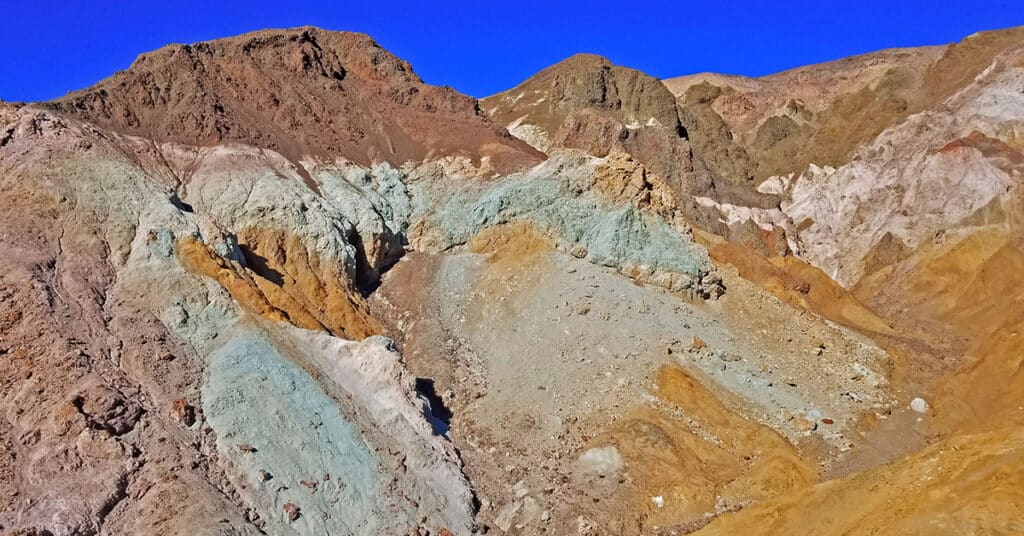
Few visitors to Artist Drive realize that there are at least 4 short adventure hikes off the main loop. The first is a ridge hike at the first pull-out parking area about 2 miles up the loop. The second two are canyon hikes at the base of 2 dips (actually marked by a yellow highway “Dip” warning sign. The fourth series of canyon hikes are the canyons surrounding the hills of Artist’s Pallet. Route details: 4 Hikes Approx. 6 Miles Total **Elevation Gain 300ft | Ridge and Canyon Wash Trails** Click image or title above for more…
Twenty Mule Team Canyon | Death Valley National Park, California
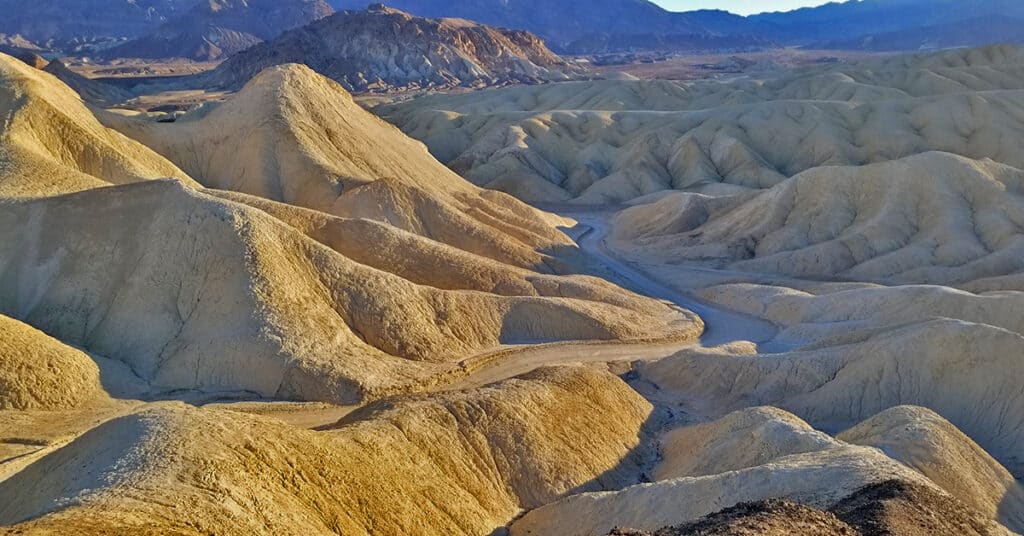
Twenty Mule Team Canyon is the original late 19th century bad lands route for the famous Twenty Mule Team wagons that hauled borax ore from the Harmony Borax Works in Furnace Creek out of Death Valley, 165 miles away to Mojave, California. Today you can drive through Twenty Mule Team Canyon on a good unpaved road to see the same surroundings the original Twenty Mule Team Canyon wagon drivers viewed. You will also see signs of historic borax prospecting in the canyon. Approx. 4 Miles Loop; 500ft Elevation Gain **Unpaved and Paved Roads** Click image or title above for more…
01 Death Valley National Park Overview
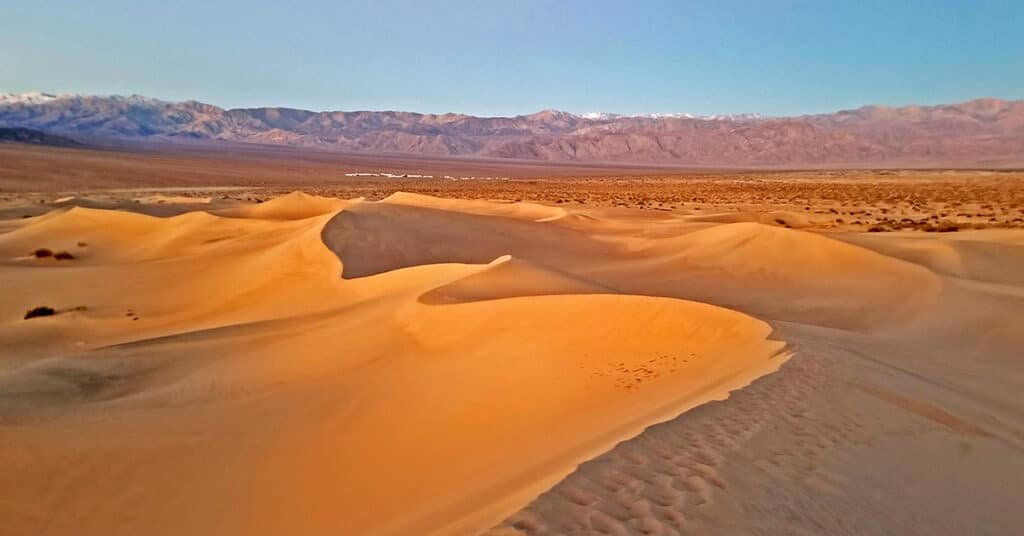
Death Valley National Park, California: View Hiking and Trail Running Adventures in Death Valley, one of the hottest places on planet Earth! Death Valley National Park is massive and offers deep wilderness adventure opportunities, car camping and sightseeing from numerous spectacular viewpoints, and lodging in cabins, motels and a luxurious Inn. Hiking includes everything from the salt pan desert floor below sea level to the spectacular peaks of the Panamint Mountain Range topping 11,000ft in elevation. In Death Valley you can find weird salt formations and ancient Bristlecone Pine trees. Best time of year to visit lower regions: Late Fall through Early Spring. Best time of year to visit the Panamint Mountains above 6,000ft: Late Spring through early Fall. Follow thumbnail images to view the details you will need to plan your adventures here. Click image or title above for more…

